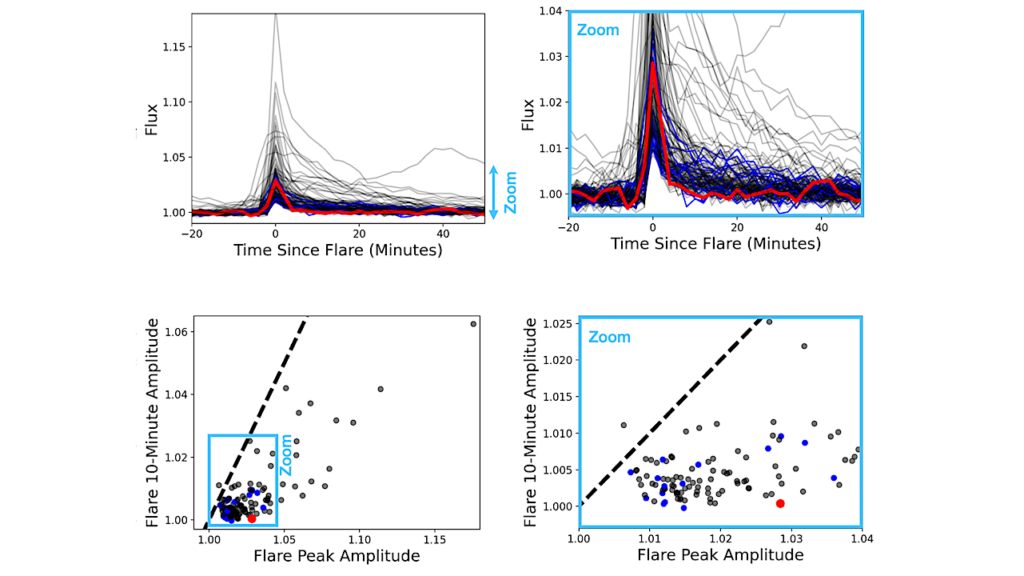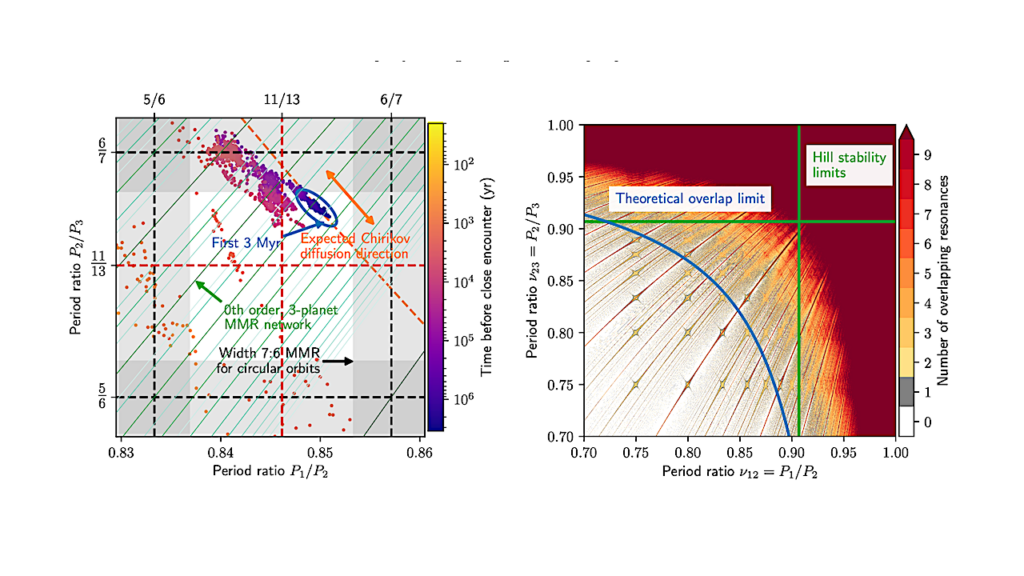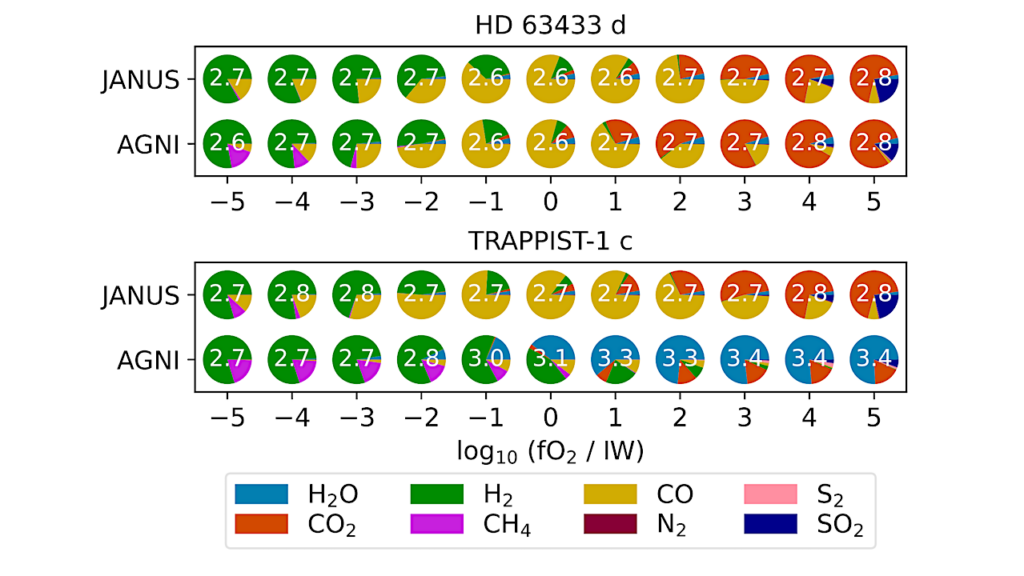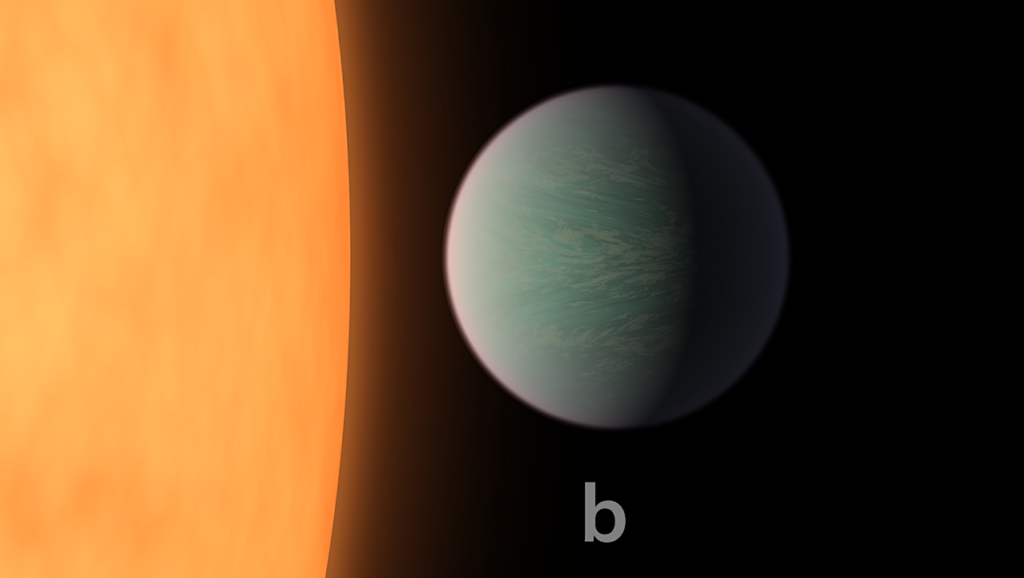Greater Climate Sensitivity And Variability On TRAPPIST-1e Than Earth

The atmospheres of rocky exoplanets are close to being characterized by astronomical observations, in part due to the commissioning of the James Webb Space Telescope. These observations compel us to understand exoplanetary atmospheres, in the voyage to find habitable planets.
Image: Difference (∆) between Earth-analogue and TRAPPIST-1e (a, d, g) spatial extremes
for maximum temperature at the surface (Tmax in °C). (b, e, h) are the same as (a, d, g)
but for ERA5 reanalysis and TRAPPIST-1e, and (c, f, i) for ERA5 reanalysis and the Earth
analogue. The different pCO2 scenarios are described in Section 3.1 and are referred to as
‘Low’ – 10-2 Bar, ‘Mid’ – 10-1 Bar and ‘High’ – 1 Bar. White regions represent areas without
extremes and non-statistically significant values (p-value ≥ .01) following a two-tailed
Wilcoxon rank sum test and a Bonferroni correction (see Sect. 3.4).
With this aim, we investigate the effect that CO2 partial pressure (pCO2) has on exoplanets’ climate variability, by analyzing results from ExoCAM model simulations of the tidally locked TRAPPIST-1e exoplanet, an Earth-like aqua-planet and Earth itself. First, we relate the differences between the planets to their elementary parameters.
Then, we compare the sensitivity of the Earth analogue and TRAPPIST-1e’s surface temperature and precipitation to pCO2. Our simulations suggest that the climatology and extremes of TRAPPIST-1e’s temperature are ∼1.5 times more sensitive to pCO2 relative to Earth. The precipitation sensitivity strongly depends on the specific region analyzed.
Indeed, the precipitation near mid-latitude and equatorial sub-stellar regions of TRAPPIST-1e is more sensitive to pCO2, and the precipitation sensitivity is ∼2 times larger in TRAPPIST-1e. A dynamical systems perspective, which provides information about how the atmosphere evolves in phase-space, provides additional insights. Notably, an increase in pCO2, results in an increase in atmospheric persistence on both planets, and the persistence of TRAPPIST-1e is more sensitive to pCO2 than Earth.
We conclude that the climate of TRAPPIST-1e may be more sensitive to pCO2, particularly on its dayside. This study documents a new pathway for understanding the effect that varying planetary parameters have on the climate variability of potentially habitable exoplanets and on Earth.
Assaf Hochman, Paolo De Luca, Thaddeus D. Komacek
Comments: Accepted at ApJ
Subjects: Earth and Planetary Astrophysics (astro-ph.EP); Atmospheric and Oceanic Physics (physics.ao-ph); Fluid Dynamics (physics.flu-dyn)
Cite as: arXiv:2208.06297 [astro-ph.EP] (or arXiv:2208.06297v1 [astro-ph.EP] for this version)
Submission history
From: Thaddeus Komacek
[v1] Fri, 12 Aug 2022 14:29:35 UTC (6,831 KB)
FULL PAPER: https://arxiv.org/abs/2208.06297
Astrobiology,








